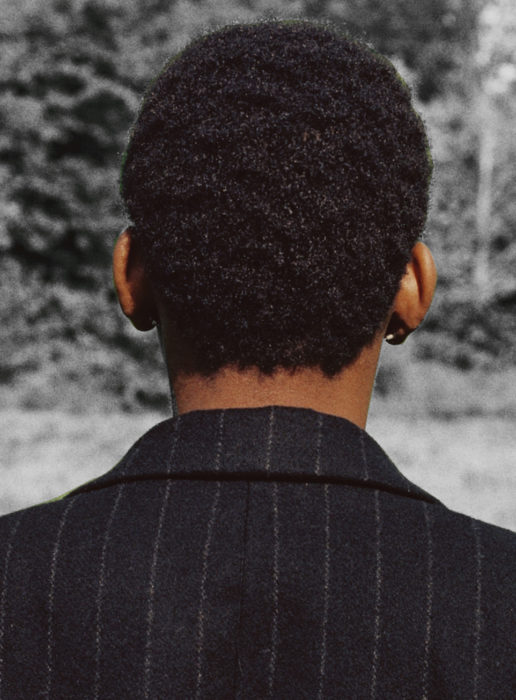The Politics of Afro Hair In The Work Place
Words: Kiri Kankhwende
When Hackney MP Diane Abbott told Andrew Marr during the General Election campaign that her views on the IRA, like her hair style, had changed over the years, the newspapers went into overdrive, publishing several photo galleries of Diane’s different hair styles during her career.
A statment or a hairstyle?
As Britain’s first black female MP, scrutiny of everything about her has been intense, including her hair style. In an article for the Stylist, Abbott has described how going for the big chop and growing her afro was “liberating” and marked her political awakening. Like most black women, Abbott has worn a range of styles in her career – afro, braids, weaves, wigs and chemically relaxed hair. And as one of the leading black women in public life, Abbott’s hair is a powerful symbol.
In her article, Abbott said that though she felt pressure to look professional in her job, it was never about having straight hair. She also said: “Sometimes you have a hairstyle because you like it, and sometimes it’s a statement.”
The fact is, the way black women wear our hair is often interpreted through a political lens, whether we want it to be or not. And despite Abbott’s experiences, many black women are told – explicitly or implicitly, that professional hair is straight hair.
We see it in the media. Despite the fact that shows with black casts and black female leads are growing in number, led by the US, shows like Insecure, How to Get Away With Murder and Scandal, most of the black women in these shows have straight hair, be it weaves, wigs or relaxed hair. Issa Rae is a notable exception, with her hair often plaited or in an afro, but straight hair is still the norm.
Shonda Rhimes, the showrunner behind Scandal and How To Get Away With Murder, has made a point of scripting moments when Kerry Washington and Viola Davis are seen with their hair natural, getting a weave done or taking a wig off, but when these powerful female characters face the world, it is with every strand in place…and straight. And although the natural hair movement is vibrant and vocal, there is still not enough visibility for natural hair in public life.
Dawn Butler MP and Marsha de Cordova MP both have braids, while prominent commentators like journalist and Sky News Pledge show regular Afua Hirsch rocks her natural curls. In the last season of Broadchurch on ITV, actor Marianne Jean Baptiste wore a short afro, while Thandie Newton wore braids in the last season of the BBC show Line of Duty.
Don’t touch my hair
When the Evening Standard recently put Solange on the cover of the ES Magazine, they came under fire for airbrushing her elaborate braided hairstyle, toning it down to fit their cover. The irony of the Evening Standard messing with the singer who sang about people not touching her hair was not lost on black women, who know the pressure to conform to white standards of beauty or to what others perceive to be “acceptable”, especially if you’re not working in the creative industries.
Work places can be frustrating, often a minefield of puzzled white colleagues who don’t understand how your hair style can change from day to day, or who barrel through personal boundaries and plain good manners to touch your hair, uninvited. But many women find that the hardest hurdle to overcome is undoubtedly the perception in some quarters that afro hair is somehow unprofessional or unacceptable – especially in corporate environments such as the City, where there is pressure to conform.
Sometimes it’s the snide comments that make women feel that their hair style is perceived as too “untidy” for a corporate environment. Other times the dress code makes it plain. Last year, a Zara employee in Toronto was told that her box braids were “unprofessional.” To make matters worse, the managers in question then tried to “fix” her hair in the middle of a crowded mall.
While the case did make headlines, the dress codes that restrict black women to wearing their hair as close to the European norms as possible have not provoked the public outcry that other unfair dress codes have done – such as the woman who challenged her firm’s dress code on compulsory high heels for women and started a petition that racked up 100,000 signatures.
Is Google’s algorithm bias?
Last year, a researcher found that when you do a Google image search for “unprofessional hair”, most of the images are of black women with afros or braids. Having run the search again, that’s still the case. Opinion is divided on whether Google is fuelling bias or whether the algorithm just reflects society’s assumptions.
Historically and today, Black hair in its natural form is seen as inherently challenging to the status quo because the “norm” has been narrowly defined as the European ideal of straight hair. And just as the beauty industry is being forced to change with the times and serve its diverse clientele, workplaces that still cling to outdated dress codes – whether they are formal or informal – will have to change as well.
Black women can and will continue to wear an array of hair styles. The key – whether we’re doing it to make a point or because we like the style – is that it should be our choice.

